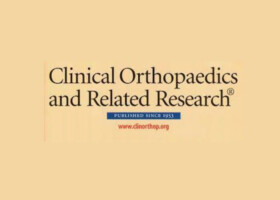
Authors:
Peter J. Millett, MD, MSc, Yi-Meng Yen, MD, PhD, Connie S. Price, MD, Marilee P. Horan, MPH, Olivier A. van der Meijden, MD, and Florian Elser, MD
Abstract:
Infection after shoulder surgery is a potentially devastating complication. The incidence of infection after rotator cuff repair ranges between 0.27% to 1.9%, whereas the incidence after shoulder arthroplasty ranges from 0% and 15.4%. Infections after proximal humerus fractures are less common.
P. acnes is being recognized as a causal agent in shoulder infections with increasing frequency. This nonspore-forming microaerophilic bacillus has a low level of virulence but has been established as a pathogen in endocarditis, meningitis, arthritis, osteomyelitis and spondylitis. It has been described as the infectious etiology in 16% of prosthetic shoulder infections and in 21% of revision shoulder arthroplasties. In another series, P. acnes was the major etiology of postoperative septic arthritis, comprising 56% of shoulder infections. Herrera in 2002 reported the incidence of deep infection after open rotator cuff repair to be 0.27% to 1.7%. Athwal found an incidence of 0.43% after different techniques of rotator cuff reconstructions. P. acnes was reported as the most common infecting organism in both studies.
In contrast, reports of P. acnes in lower-extremity infections, including prosthetic joint infections or after arthroscopy, are rare. This is likely because P. acnes is predominant in the pilosebaceous follicles that are most prevalent in the head, neck, and thorax. P. acnes is a dominant anaerobic bacteria isolated from the healthy skin in moist areas such as the axilla. This is another reason why the shoulder is thought to have a propensity for infections with this type of microorganism.
Because it is difficult to detect, the actual number of P. acnes shoulder infections probably has been underestimated. P. acnes is a fastidious organism, requiring prolonged growth duration and anaerobic conditions to grow in culture. When isolated, it often is disregarded as a contaminant owing to its presence as a commensal of upper-body skin sites. Furthermore, the clinical presentation of P. acnes is usually insidious and nonspecific.
Patients present without the typical signs of infection such as fever or local inflammatory reaction and invariably have normal leukocyte counts (WBCs).
To increase our awareness of the potential of P. acnes infection as an occult cause of postoperative shoulder pain, we investigated a series of patients diagnosed with post-surgical P. acnes shoulder infections to answer the following questions: (1) What characterizes a P. acnes infection of the shoulder, in clinical presentation and quantification of laboratory markers? (2) How are the microbiologic diagnosis and analysis best obtained? (3) How should this infection be treated and what clinical results of therapy can be expected?
For the complete study: Propionobacter acnes Infection as an Occult Cause of Postoperative Shoulder Pain
